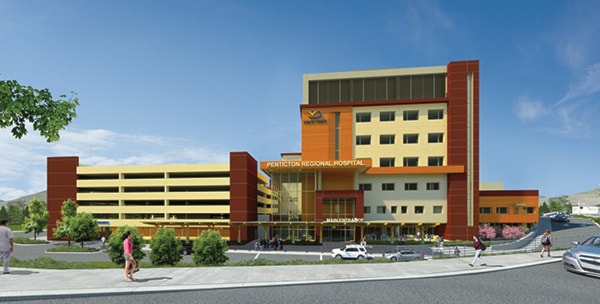A shortage of doctors continues to be of high concern in the South Okanagan.
“We definitely have a challenge locally and across the province,” said Dr. Murali Venkataraman, a Summerland doctor and physician lead for the South Okanagan Similkameen Division of Family Practice. “It’s something we’re trying to address.”
Two aging Penticton physicians had to leave their practices suddenly because of health concerns. In Summerland two doctors are ready to retire and others are looking to take time off or reduce their hours.
“Most physicians are already working fairly long hours,” said Venkataraman.
During a visit to the Penticton Regional Hospital in July, Chris Mazurkewich, president and CEO of Interior Health noted improving primary care, including access to physicians, is one of Interior Health’s top priorities.
That access would be both in terms of number of patients and hours of care available.
“We’re working with different communities on how to do that,” Mazurkewich said. “Some are further along than others, but it has been a recognized need for a number of years. So now it has become one of our top five priority items to work with physicians on.”
Mazurkewich said the new Patient Care Tower being constructed in Penticton will help attract more physicians. He noted that in 2015, Interior Health recruited the highest number of physicians to the region than ever before. In 2016, Penticton recruited seven family practice doctors and seven specialists. According to Venkataraman that has prevented more than 11,000 people from losing a doctor.
The age demographics in Penticton add to the problem. Mazurkewich said there are more people over the age of 65 in the Interior Health boundaries than there are people 18 and under, calling it an “inverted, abnormal pyramid for what this country has seen over the last 100 years.”
“That means we have to change how we deliver services, it’s not optional,” Mazurkewich said.
Executive medical director for the Central Okanagan, Mike Ertel, agreed changes are much needed, and the solution may be team-based care — finding efficiencies, tying in other resources including social workers and allied healthcare professionals.
In addition, the University of British Columbia’s Family Medicine Residency Program brings new medical graduates to the region for a two-year term.
Training is delivered at 18 sites across the province, including the South Okanagan Similkameen. Each year, four new medical residents are being accepted to work in the region.
The first four residents in this program started in the region in July — Drs. Jacqueline Bourdeaux, JoyAnne Krupa, Rebecca Psutka, and Travis Thompson. They will train at the Penticton Regional Hospital, South Okanagan General Hospital as well as community clinics in the region. This will expose them to a wide variety of clinical experiences, helping to serve patient populations in penticton and Summerland, as well as Oliver and Osoyoos.
“Residents play a very critical role in our healthcare system, helping to enhance service capacity across the province. The launch of this new training site in the South Okanagan will bring about increased access to physician services and help meet the needs of communities in B.C.’s Interior,” said Dr. Roger Wong, executive associate dean of education, UBC Faculty of Medicine.
Resident physician Travis Thompson who is part of that program, grew up in Oliver and plans to stay true to his roots once he completes his family medicine training.
